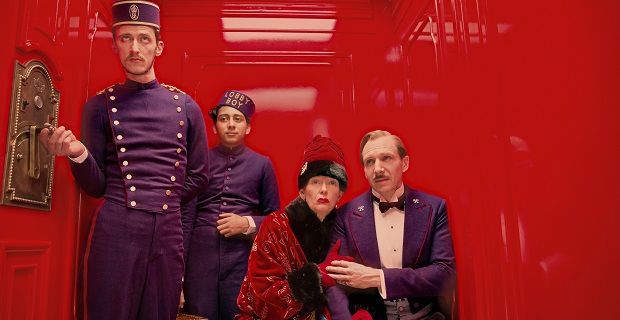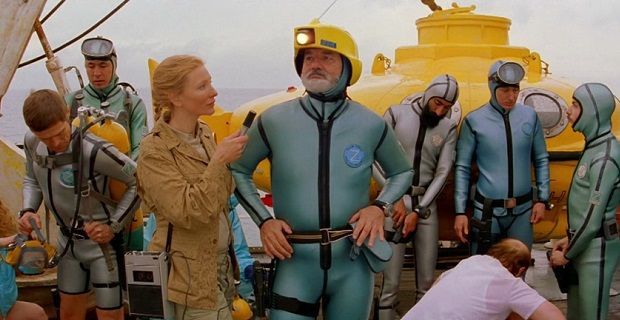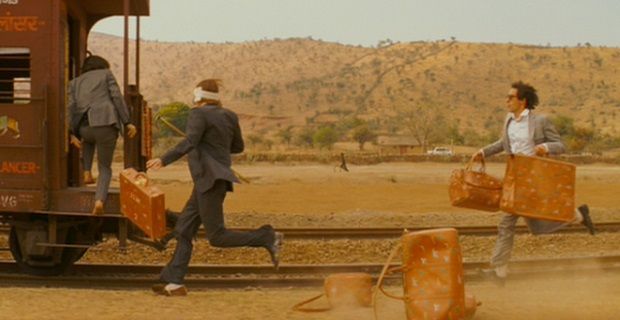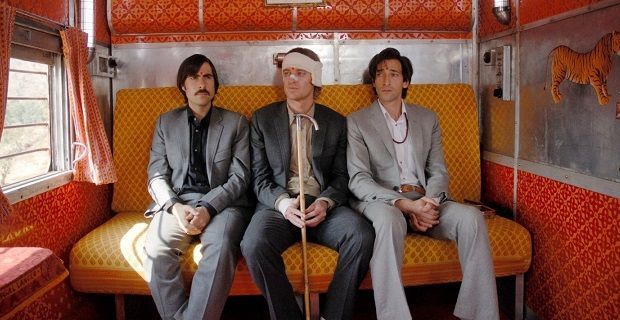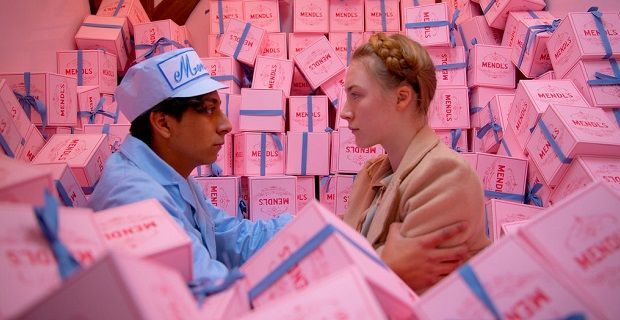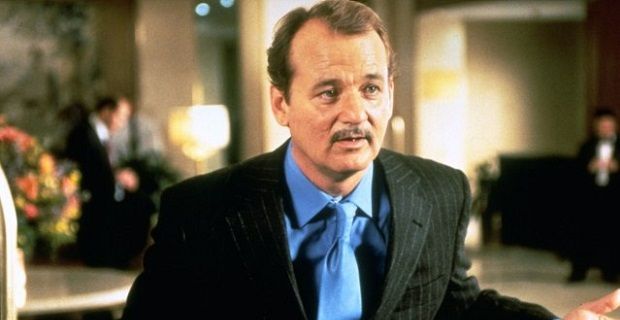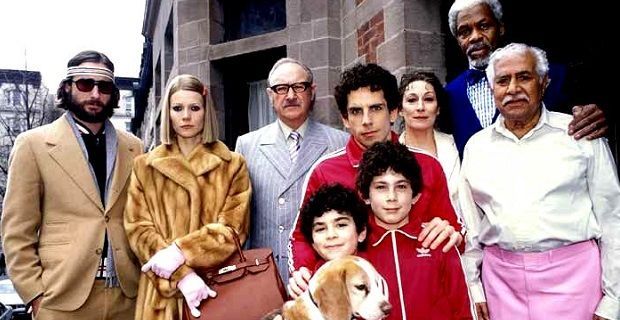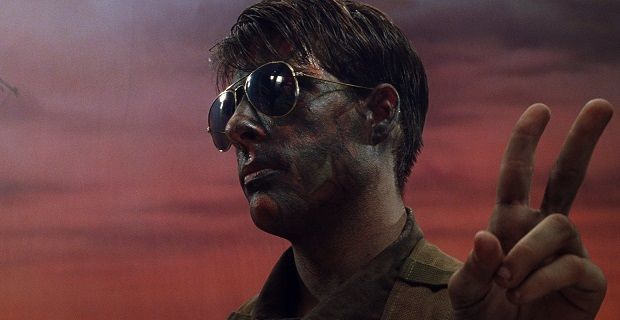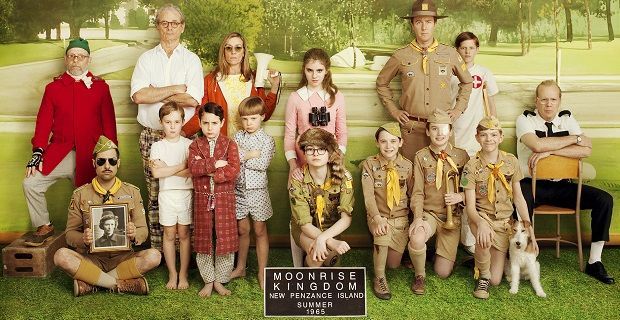Even if your interests don't tend toward cinema's indie side, you probably know Wes Anderson's name; chalk it up to widespread critical praise, awards season recognition, or clever casting, but since making his 1996 debut with Bottle Rocket, he's gained increasing visibility among mainstream audiences with each subsequent offering.
He's also been the recipient of in-depth scrutiny, both positive and negative, for his specialized, immediately recognizable, brand of filmmaking. His latest movie, The Grand Budapest Hotel, has opened wide across the US, and reignited conversations about Anderson's very particular approach to making movies.
So, we at Screen Rant saw fit to present a guide to the elements that define his movies from the 90s to today. If you're just now being introduced to his colorful sense of disaffected whimsy, we've got you covered on the basics of Wes Anderson's filmography.
-
Technical Precision
Let's start with the most noticeable identifying aspect of Anderson's work: his chops behind the camera. Maybe more than anything else, it's the look of Anderson's films that immediately give them away as his; it's unlikely you'll ever watch Rushmore, or Fantastic Mr. Fox, or The Darjeeling Limited and wonder who made it.
There are a number of factors that contribute to making a recognizable Anderson product. It's not simply one thing or the other; it's not the way that he captures shots, composes images, or dresses up his sets (and his characters, for that matter), but rather all of these details and more taken in total.
In that respect, this section can actually be broken down into multiple sub-categories, all captured under the same umbrella of craft. Take away one, and you inevitably change the impact and the effect of the others; that's because Anderson creates movies that are very much the sum of their total parts, especially when it comes to how he puts them all together.
-
Technical Precision, Part 1: Tracking Shots
Take, for example, the most widely used weapon in Anderson's technical arsenal - the tracking shot. Put a camera on rails, and let it glide, left to right, right to left, and backwards; it's a technique that creates movement and energy, and it's a huge part of what makes Anderson movies feel lively even when they're downright depressing.
Anderson first developed his penchant for tracking shots in Rushmore - specifically the aquarium groundbreaking scene - and he's kept up with it ever since, all the way through countless moments peppered across 2012's Moonrise Kingdom and The Grand Budapest Hotel.
Tracking shots are essential to giving Anderson movies momentum, and arguably the most important flourish he brings to production. But what he puts in front of the camera matters almost as much as what he does with the camera itself.
-
Technical Precision, Part 2: Symmetry
Just as with the tracking shot, Anderson's deep-rooted love of symmetry in all of his shot compositions has taken shape over time. Traces of this trait can be seen in all of his early movies, of course, but cut to present, and his initial obsession has bloomed into full-blown mania.
The man simply cannot resist the draw of reciprocal arrangement of props and characters in front of his camera. This attribute pops up in Bottle Rocket and Rushmore, but check out everything from The Royal Tenenbaums onward, and it becomes more and more prevalent.
Some may argue against his philosophy, instead advocating techniques that diffuse the symmetry Anderson has become known for (and which he most likely got through his love for Stanley Kubrick). But for Anderson, symmetry is a very necessary piece of his signature.
-
Technical Precision, Part Three: Palettes and Patterns
Layered on top of the previous two segments is Anderson's sharp eye for patterning and for bursts of color, whether in the drab carpet that adorns the living room floor of the Tenenbaum house, or the cascade of small, red apples that decorate Felicity Fox's dress.
The Grand Budapest Hotel takes Anderson's love of patterns to a new level - he makes patterns out of the furniture in the titular hotel's lobby, and litters the mountainside it sits atop with a deliberate arrangement of evergreens - and could be his most vibrant movie yet.
But he's always been deeply invested in both of these qualities, alternately working with muted and more sumptuous hues (as well as patterns of greater and lesser prominence) in the oceanic setting of The Life Aquatic With Steve Zissou, the Indian provinces of The Darjeeling Limited, the urban confines of The Royal Tenenbaums, and the flinty coastal backdrop of Moonrise Kingdom.
-
A Recurring Stable Of Actors
In the nearly two decades since Anderson has been making movies, he's managed to cultivate a regular troupe of actors and actresses who consistently appear in many of his projects.
The list is as long as it is loaded with talent; Anjelica Huston and Bill Murray (who has had roles in all but one of Anderson's films) lead the pack as the most veteran thespians of the bunch, but they're joined by the brothers Wilson (Luke, Owen, and even Andrew), Willem Dafoe, Jason Schwartzman, Adrien Brody, Eric Chase Anderson (Wes' younger sibling), Michael Gambon, Jeff Goldblum, Wallace Wolodarsky, Brian Cox, and many others.
Anderson's still building up his roster, too. Edward Norton, Tilda Swinton, and Harvey Keitel have each tagged along on his most recent two ventures, while The Grand Budapest Hotel brings in The Host star Saoirse Ronan as well as newcomer Tony Revolori and Moonrise Kingdom introduced viewers to Kara Hayward and Jared Gilman.
-
Family Matters
In one way or another, family is at the center of every story Anderson chooses to tell. Above his style, above his technique, above his repeated use of the same actors, it's the gravitational pull of family in all of its dysfunctional glory that defines the tone and atmosphere of his films.
For the best exercise in familial disharmony Anderson has ever pulled off, look to The Royal Tenenbaums; it's a movie that starts with feuding between parents and siblings (most of it directed at the eponymous Tenenbaum patriarch), and ends with a well-earned series of reconciliations.
But you'll find that family provides the heart, if not the conflict, for his other pictures, too - like Fantastic Mr. Fox, The Darjeeling Limited, and The Life Aquatic With Steve Zissou. (Even The Grand Budapest Hotel revolves around family strife.)
-
Nostalgia
If there's one criticism that gets thrown Anderson's way more than any other, it's that he's in love with the past. It's difficult to get around that one; whether in referencing the French New Wave, Orson Welles, or the literature of J.D. Salinger, Anderson has an obvious soft spot for bygone times.
At the same time, nostalgia informs a great deal of his work in other ways, too. He's not the only person involved in his films with a deep-rooted fondness for out-of-date eras and cultures; many of his characters show the same inclination toward antiquations as he does.
Moonrise Kingdom and The Grand Budapest Hotel may be the two most significant examples of how nostalgia shapes Anderson's plots, but even the characters of Rushmore and The Royal Tenenbaums (among others) tend to long for the past.
-
Period Settings
Tied to Anderson's nostalgia, the period backdrops of all his films are significant enough that they demand individual attention.
In perhaps the ultimate display of his personal devotion to nostalgia, Anderson's films all take place in eras that occur prior to the present. Or at least they all seem to; films like Rushmore, Bottle Rocket, and The Royal Tenenbaums are practically modern compared to his latter day efforts.
But even when he doesn't directly acknowledge the time period (as with Moonrise Kingdom and The Grand Budapest Hotel, for example), there's a sheen of antiquity to all of his films. Try imagining a Wes Anderson movie set in 2014; it's pretty hard to picture.
-
Conclusion
Once you start getting in-depth with Anderson's films, you'll find even more common threads that tie them all together and distinguish them; connections between protagonists from one movie to another, nods to films like The Magnificent Ambersons as well as Jules and Jim, and more. But if you're only now getting started diving into the world of Wes Anderson, this is what you absolutely need to know to get by and to understand what makes him, his characters, and his narratives tick.
If you're wondering where to start, Bottle Rocket and Rushmore are the two best jumping-off points that balance between Anderson's now-established style and a sensibility that may feel more familiar to uninitiated viewers. Alternately, you can just dive right in with The Grand Budapest Hotel, perhaps the most "Wes Andersony" movie Anderson has ever made.
_____
The Grand Budapest Hotel is now playing in theaters.

